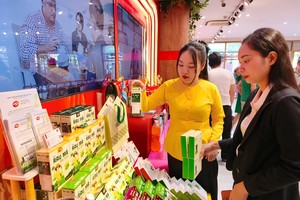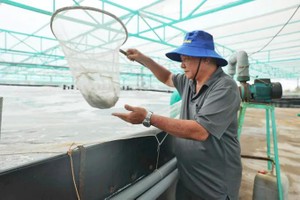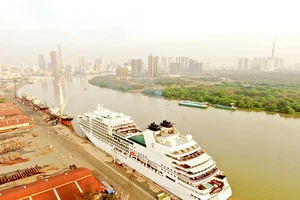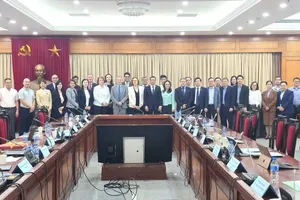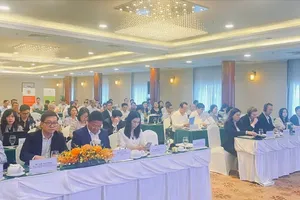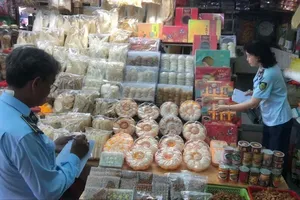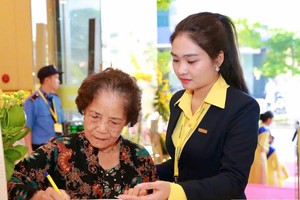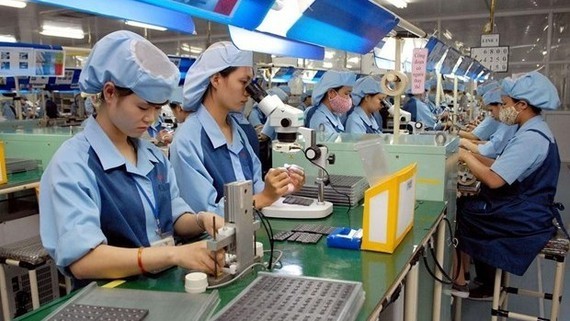 Illustrative image
Illustrative image
The view is that FDI capital inflow may be high but it is still low in efficiency, with very slow technology transfer. The transfer fee of FDI projects is also too high, with a fear of tax evasion and detrimental environmental impact. Nonetheless, FDI projects are vital for the economy and general infrastructure, and cannot be ignored.Role of FDI When we look at the export turnover of FDI companies, we see that they account for about 73.6 percent, with a total export turnover of US$332.25 billion in 2021, which is clearly a large proportion. On the other hand, the export turnover of domestic enterprises is around 25 percent to 27 percent, reaching $80 billion to $90 billion per year, three times higher than it was ten years ago. In this, domestic enterprises have relied heavily on FDI enterprises to grow their exports. Recently, Nike announced that Vietnam has surpassed China in becoming their biggest partner in the world, accounting for about 51 percent of their total global output, while China is now only at around 21 percent. Such a large proportion has helped Vietnam gain a foothold in the world market. Hence, without the support of FDI enterprises, the growth of domestic enterprises would have been rather difficult. When we look at the exports of electronics and mobile devices from Vietnam, Samsung holds 55 percent of the mobile phone output produced in Vietnam. They do not depend on anyone, because no Vietnamese enterprise has been able to make this product. Vingroup abandoned this field after a failed attempt, and BKAV produces in very small quantities. In the agricultural, forestry, and fishery export market of nearly USD 50 billion, Vietnam holds dominion as all products are made by Vietnamese enterprises. There are some facets of the FDI sector that are questionable, such as low budget, lack of latest technology transfer, transfer prices and tax evasion techniques, which are all very realistic situations. Even though the contributions of the FDI sector are not completely overboard, we must also see that the problem lies mainly in our management system. If our management system improves in efficiency, these weak factors will lessen. The problem here is that we need to have the right approach, and see the positive aspects of the FDI sector. For instance, the FDI sector has created jobs for more than 3.6 million fully employed workers and about five to six million part employed workers. The job creation index in the EU countries, the US, and Japan is the leading indicator. Unemployment brings in a lot of problems, such as rising unemployment benefits, creating a burden on the state budget, and affecting safety and social security. Recently, VinFast invested in the US and received a tax incentive of more than $20 million from the California government, because the VinFast project will help create at least 1,065 new jobs.Quality FDI inflow Looking back at the last thirty years of FDI inflow into Vietnam, especially after Resolution 50/NQ-TW of the Politburo was issued, we have attracted investments from a multitude of high-tech projects, sourced better technology, and the spillover effects are there to see on the current socio-economic scenario. However, so far we have not done much to attract future technology projects to adapt to the industrial revolution 4.0 and digital transformation, and neither have we moved for rapid transition to a green economy, with low greenhouse gas emissions. Even the two economic hubs of the country, Hanoi and Ho Chi Minh City have not yet built many eco-industrial parks and green cities, despite having high preferential policies, especially with large-scale projects and important national impact, all of which have shown rather modest results. Currently, investment projects are still small, and there are still many projects under $1 million. What needs to be done is to upgrade the state apparatus, and develop a digital and constructivist governance style. Even though we are orientated towards it we have not yet fully and effectively implemented it in practice. We have not yet made good use of new-generation FTAs, so we have mainly attracted FDI from South Korea, Japan, and some ASEAN countries. We have not yet attracted much investment from the US, EU, or from corporations on the Fortune 500 list. These are the issues that need attention if we want to upgrade our FDI inflow. Resolution 50/NQ-TW has set out the task of developing criteria to evaluate the effectiveness of foreign investment in terms of economy, society, environment, defense and security. If we can build this base, such as the investment rate, the use of labor, technology, the environment, then the added value and the ability to link with domestic enterprises can be accurately measured for attracting and using FDI. Therefore, there must be a clear criterion. Europe has been talking a lot lately about reducing greenhouse gas emissions. All kinds of goods and products, including those from Vietnam, must meet these standards before they can be exported to Europe. Prime Minister Pham Minh Chinh recently made commitments on greenhouse gas emissions at COP26. Therefore, the criteria and standards set out must also be based on commitments to select quality FDI inflow.Catching the Eagles In recent years, especially since the outbreak of the Covid-19 pandemic, we have talked a lot about investment capital inflow into the country. For instance, we have the experience of attracting Intel. As soon as Intel started to pay attention and indicated an interest in wanting to invest in a project in Vietnam, Prime Minister Phan Van Khai established a task force to review and negotiate with Intel, instead of going through ministries. At that moment, Vietnam had no large-scale and high-tech projects. As a member of the task force at that time, I represented the Vietnamese Government to meet with Mr. Than Trong Phuc, who was Intel's representative, and who said that we should no longer consider each other as partners, but must be on the same side, to pull Intel back to Vietnam. This scientific approach impressed Intel. They did not think that Vietnam would set up such a strong negotiating team. Moreover, at that time, Intel's project was the only project that received financial support from the Government, at the request of investors. This support was then calculated for personnel training. In the end, Intel chose Vietnam, and even now, they are continuing to expand their investment in Vietnam. After Intel, only Samsung, LG, and Nokia have invested in the same way. We must admit that we have missed many opportunities in the past that we still regret. One of these was the time in 1995, when the financial crisis broke out in Asia, and the baht depreciated with investors withdrawing massively from Thailand, and shaking the whole region. The mistake at that time was that we revised the Law on Foreign Investment because we thought it was too favorable for this area and needed to be tightened. If we hadn't changed the law, investors would have been drawn to Vietnam, and not Thailand, Malaysia or Singapore. Hence, it is clear that institutions and policies are very important in attracting investments. One of the reasons why Vietnam immediately attracted a large amount of investment capital after Doi Moi was due to the Law on Foreign Investment issued in December 1987, which was one of the most attractive investment laws in the region. When designing this law, we learnt from the experience of eighteen foreign investment laws of other countries. At that time, surrounding countries such as Thailand and Indonesia only opened their doors hesitantly, limiting foreign investment to 49 percent, while Vietnam opened its doors and accepted 100 percent foreign-owned enterprises, only limiting the rate of foreign investment. Minimum capital contribution of foreign investors was 30 percent, with no maximum limit. Along with this there were many investment incentive policies that were implemented. More importantly, the State Committee for Cooperation and Investment (SCCI) was officially established in March 1989, then tasked with being the focal point to manage foreign investment activities in Vietnam. As an Inter-Ministerial Committee, with full authority in hand, the project was approved very quickly. When necessary, it could be submitted directly to the Prime Minister, so the investment procedure at that time received no complaints and investors were very excited. Since then, there have been waves of foreign investment in Vietnam.Immediate solutions Currently, there are at least three requirements that need to be tackled to meet foreign investor needs, and which we have not been able to resolve so far. Firstly, although the Government is conscious and determined to improve the investment and business environment, unfortunately, the implementation stage has not kept up with the pace. We do not have an open, transparent, or stable institution that foreign investors expect. We make laws and fix them far too quickly. Hence, without institutional stability, it will be impossible to attract the “eagles”. What foreign investors need is simple, easy-to-understand administrative procedures, fast implementation, and fast licensing procedures. This is the reason why we didn't get more FDI outflow from China when we were looking at an open market that was ready to move. We did not move fast enough when businesses stopped production in China. If we take one or two years to process the transfer, businesses stand to lose huge number of orders, and businesses cannot slacken their pace of work. This was the main reason why Vietnam lost out to Indonesia. The President of Indonesia ordered that a project worth $70 million would be creating around 300 jobs and should receive license in one day. The Philippines and India also have many high preferential policies. Competition to attract FDI is an international competition, which must be viewed as such. Secondly, intellectual property in Vietnam is still a weak issue. If we cannot guarantee this, especially for US and European investors, they will not feel secure. Thirdly, corruption is a perineal problem, even though in the last two to three years we have made a lot of progress in anti-corruption measures. State management agencies are still making it difficult for investors with cumbersome procedures and unofficial hidden costs. Therefore, it is necessary to pay more attention to reforming the investment environment, simplifying procedures, offering more transparency, and following a standard format from top to bottom.
We do not have an open, transparent, or stable institution that foreign investors expect. We make laws and fix them far too quickly. Hence, without institutional stability, it will be impossible to attract the “eagles”.
More than ever, this is the time to upgrade the state apparatus, and develop a digital governance system. Even though this orientation already exists, we need to implement it fully and effectively.
Global investment flow is once again activating and Vietnam's economy too is recovering, starting from the fourth quarter of 2021. Flights, especially international ones, are being restored. Many FTAs of Vietnam with partners have also been signed, bringing in great opportunities. At the end of 2020, high level business trips of the Prime Minister and the State President were accompanied by very effective investment promotions. Many Japanese and European investors have committed to investing in Vietnam in mega projects. These are projects that Vietnam needs the most. If we make the right moves and find solutions as mentioned above, plus develop criteria to attract and evaluate the most effective FDI, we will receive many more valuable investors, especially from the US and Europe.
Prof. Dr. Nguyen Mai Chairman, Vietnam Association of Foreign Invested Enterprises (VAFIE)

